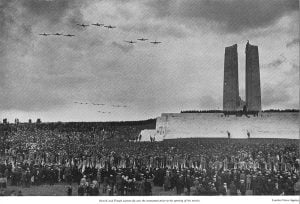
History
The untold story of the Hudson’s Bay Company
A look back at the early years of the 350-year-old institution that once claimed a vast portion of the globe
- 4473 words
- 18 minutes
History
On the 100th anniversary of the Chinese Exclusion Act, a look at the system of IDs used to track and control Chinese residents

Every Remembrance Day, Cecil Yip would polish his medals, put on his navy suit jacket and set off for Vancouver’s Chinatown. He’d meet his fellow veterans of Pacific Unit 280 to march in the big parade, sometimes with tears in his eyes, and after raise a glass to their fallen comrades. Yip did this every year until his death in 1989.
His dedication made an impression on his daughter, Linda Yip. But when she asked him what it was like taking part in the Second World War, he’d shake his head. “He was angry. He was frustrated,” recalls Linda. “He’d say, ‘You don’t even know what you’re asking.’ As a child, it was a taboo subject you just didn’t bring up.”

While rummaging through his desk one day, she found a card in one of the drawers that came from the Department of Immigration and Colonization and had his father’s baby picture on it. Strange, because her father wasn’t an immigrant: he was born in Canada. There was a number in the top right corner and a note on the bottom that read, “This certificate does not establish legal status in Canada.” When Linda asked her father about it, he scolded her for going through his private belongings.
It would be years before she learned what the document was: one of many certificates issued by the Canadian government to monitor and contain Chinese people after the 1923 exclusion act. The act, officially known as the Chinese Immigration Act, took effect on July 1, 1923, a day local Chinese called Humiliation Day. It halted immigration from China — immigration the government had welcomed when labour was required for the transcontinental railway. In some cities, Chinese residents hung mourning wreaths on doors.
Systemic racism, as it turned out, required a lot of paperwork. In the years leading up to the act, the government was already issuing various certificates for Chinese residents in Canada, paperwork used for everything from identification to travel authorizations. These documents were cutting edge, issued with photographs starting in 1910, the first mass use of picture identification in the country.
Documentation became even stricter with the exclusion act. All Chinese residents in Canada were required to register or re-register as part of a mass, nationwide drive. “Everyone was going to get scooped up,” explains Catherine Clement, the curator collecting evidence of this paper trail for an exhibition at the Chinese Canadian Museum in Vancouver set to coincide with the 100th anniversary of the act. “There were posters everywhere in English and Chinese about what you had to do. You had to prove who you were and justify what you had been doing. Failure to do this meant a $500 fine, imprisonment or being shipped out of the country. It scared everybody.”
Most of the papers issued have likely been lost or thrown out, unknowingly by descendants or purposefully by bearers, according to Clement. She heard some bearers, upon receiving citizenship later in life, burned the discriminatory papers that once held a tight grip on their lives. “This was over-documentation, over-surveillance, over-control and incredible intimidation,” says Clement.

The Chinese population in Canada slowly declined over the 24 years of the act, with worry in some communities that they would eventually disappear entirely. At the start of the exclusion, men already outnumbered women almost 28 to one; workers who had planned to bring their wives over and start families had their dreams crushed.
In 1947, Chinese residents finally received citizenship. But the act had lasting effects, even in family stories that seem lighthearted at first. Linda’s mother told her about growing up in 1950s Vancouver, with boys from Chinatowns in other cities showing up at her door to ask her out. “That’s not to say she wasn’t an attractive young woman, which she totally was, but it was also because the borders had been closed,” Linda says.
Linda, who became a professional genealogist and came to know this dark side of history even more intimately, now understands why Canadian-born Chinese like her father were pained about their past. “I really did blunder and didn’t understand the trauma that my father lived through, and his father before him.”
A quote she holds close to her heart comes from Louey King, a Chinese Canadian veteran like her father. He was speaking about the next generation of Chinese Canadians like her: “If they don’t understand the history and the significance of what we did, then they won’t be able to defend our rights in the future if they are taken away again. It’s not a birthright, believe me. Somebody paid for it.”
The Chinese Canadian Museum will open its new permanent facility in Vancouver’s Chinatown on July 1, exactly 100 years after the Chinese Exclusion Act became law. The exhibition The Paper Trail to the 1923 Chinese Exclusion Act launches with the opening.
Christopher Cheung (@bychrischeung) is a reporter at The Tyee, where a version of this article originally appeared.
Are you passionate about Canadian geography?
You can support Canadian Geographic in 3 ways:

This story is from the May/June 2023 Issue

History
A look back at the early years of the 350-year-old institution that once claimed a vast portion of the globe

History
A trip back in time to the memorial’s dedication

People & Culture
A celebration of the Canadian Coast Guard’s renowned search-and-rescue capabilities — and more — as the special operating agency turns 60

Science & Tech
Our understanding of the effects of impact events is continually evolving